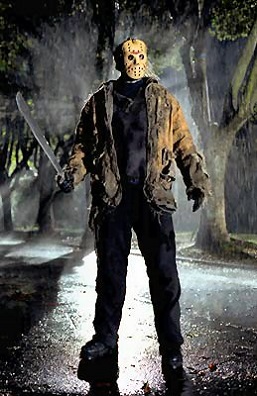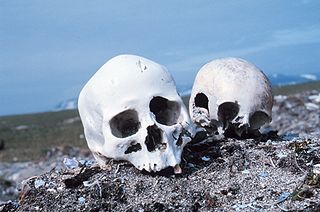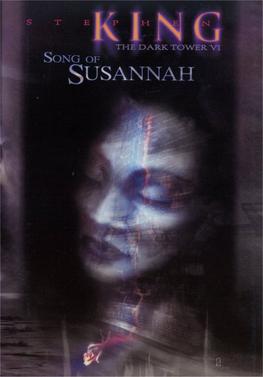Related Research Articles
Development of the human body is the process of growth to maturity. The process begins with fertilization, where an egg released from the ovary of a female is penetrated by a sperm cell from a male. The resulting zygote develops through mitosis and cell differentiation, and the resulting embryo then implants in the uterus, where the embryo continues development through a fetal stage until birth. Further growth and development continues after birth, and includes both physical and psychological development, influenced by genetic, hormonal, environmental and other factors. This continues throughout life: through childhood and adolescence into adulthood.

Sexual themes are frequently used in science fiction or related genres. Such elements may include depictions of realistic sexual interactions in a science fictional setting, a protagonist with an alternative sexuality, a sexual encounter between a human and a fictional extraterrestrial, or exploration of the varieties of sexual experience that deviate from the conventional.

Freddy Krueger is a fictional character and the primary antagonist in the A Nightmare on Elm Street film series. He was created by Wes Craven and made his debut in Craven's A Nightmare on Elm Street (1984) as the malevolent spirit of a child killer who had been burned to death by his victims' parents after evading prison. Krueger goes on to murder his victims in their dreams, causing their deaths in the real world as well. In the dream world, he is a powerful force and seemingly invulnerable. However, whenever Freddy is pulled back into the real world, he has normal human vulnerabilities and can be destroyed. He is commonly identified by his burned, disfigured face, dirty red-and-green-striped sweater and brown fedora, and trademark metal-clawed, brown leather, right hand glove. This glove was the product of Krueger's own imagination, having welded the blades himself before using it to murder many of his victims, both in the real and dream worlds. Over the course of the film series, Freddy has battled several reoccurring survivors including Nancy Thompson and Alice Johnson. The character was consistently portrayed by Robert Englund in the original film series as well as in the television spin-off Freddy's Nightmares. Englund has stated that he feels the character represents neglect, particularly that suffered by children. The character also more broadly represents subconscious fears.

Jason Voorhees is a character from the Friday the 13th series. He first appeared in Friday the 13th (1980) as the young son of camp-cook-turned-killer Mrs. Voorhees, in which he was portrayed by Ari Lehman. Created by Victor Miller, with contributions by Ron Kurz, Sean S. Cunningham and Tom Savini, Jason was not originally intended to carry the series as the main antagonist. The character has subsequently been represented in various other media, including novels, video games, comic books, and a crossover film with another iconic horror film character, Freddy Krueger.

Linda Denise Blair is an American actress and activist. She played Regan MacNeil in the horror film The Exorcist (1973), for which she won a Golden Globe Award and received a nomination for an Academy Award. The film established her as a horror icon and scream queen; she reprised the role in the sequel Exorcist II: The Heretic (1977), for which she earned a nomination for a Saturn Award.

Forensic anthropology is the application of the anatomical science of anthropology and its various subfields, including forensic archaeology and forensic taphonomy, in a legal setting. A forensic anthropologist can assist in the identification of deceased individuals whose remains are decomposed, burned, mutilated or otherwise unrecognizable, as might happen in a plane crash. Forensic anthropologists are also instrumental in the investigation and documentation of genocide and mass graves. Along with forensic pathologists, forensic dentists, and homicide investigators, forensic anthropologists commonly testify in court as expert witnesses. Using physical markers present on a skeleton, a forensic anthropologist can potentially determine a person's age, sex, stature, and race. In addition to identifying physical characteristics of the individual, forensic anthropologists can use skeletal abnormalities to potentially determine cause of death, past trauma such as broken bones or medical procedures, as well as diseases such as bone cancer.
A hybrid genre is a literary genre that blends themes and elements from two or more different genres. Works in hybrid genres are often referred to as cross-genre, multi-genre, mixed genre, or fusion genre.

Song of Susannah is a 2004 fantasy novel by American writer Stephen King. It is the sixth book in his Dark Tower series. Its subtitle is Reproduction.

In Freudian psychoanalysis, the phallic stage is the third stage of psychosexual development, spanning the ages of three to six years, wherein the infant's libido (desire) centers upon their genitalia as the erogenous zone. When children become aware of their bodies, the bodies of other children, and the bodies of their parents, they gratify physical curiosity by undressing and exploring each other and their genitals, the center of the phallic stage, in the course of which they learn the physical differences between the male and female sexes and their associated social roles, experiences which alter the psychologic dynamics of the parent and child relationship. The phallic stage is the third of five Freudian psychosexual development stages: (i) the oral, (ii) the anal, (iii) the phallic, (iv) the latent, and (v) the genital.
In Freudian psychology, psychosexual development is a central element of the psychoanalytic sexual drive theory. Freud believed that personality developed through a series of childhood stages in which pleasure seeking energies from the child became focused on certain erogenous areas. An erogenous zone is characterized as an area of the body that is particularly sensitive to stimulation. The five psychosexual stages are the oral, the anal, the phallic, the latent, and the genital. The erogenous zone associated with each stage serves as a source of pleasure. Being unsatisfied at any particular stage can result in fixation. On the other hand, being satisfied can result in a healthy personality. Sigmund Freud proposed that if the child experienced frustration at any of the psychosexual developmental stages, they would experience anxiety that would persist into adulthood as a neurosis, a functional mental disorder.

Cuteness is a type of attractiveness commonly associated with youth and appearance, as well as a scientific concept and analytical model in ethology, first introduced by Konrad Lorenz. Lorenz proposed the concept of baby schema (Kindchenschema), a set of facial and body features that make a creature appear "cute" and activate ("release") in others the motivation to care for it. Cuteness may be ascribed to people as well as things that are regarded as attractive or charming.
The women in prison film is a subgenre of exploitation film that began in the early 20th century and continues to the present day.
The term bioarchaeology has been attributed to British archaeologist Grahame Clark who, in 1972, defined it as the study of animal and human bones from archaeological sites. Redefined in 1977 by Jane Buikstra, bioarchaeology in the United States now refers to the scientific study of human remains from archaeological sites, a discipline known in other countries as osteoarchaeology, osteology or palaeo-osteology. Compared to bioarchaeology, osteoarchaeology is the scientific study that solely focus on the human skeleton. The human skeleton is used to tell us about health, lifestyle, diet, mortality and physique of the past. Furthermore, palaeo-osteology is simple the study of ancient bones.

Graham Masterton is a British author known primarily for horror fiction. Originally editor of Mayfair and the British edition of Penthouse, his debut novel, The Manitou, was published in 1976. This novel was adapted in 1978 for the film The Manitou. His 1978 novel Charnel House and 1983 novel Tengu garnered positive critical reception, the former receiving a Special Edgar Award by the Mystery Writers of America and the latter being awarded with a silver medal by the West Coast Review of Books. Masterton was also the editor of Scare Care, a horror anthology published for the benefit of abused children in Europe and the United States.

Judith Lewis, better known by her pen name Cassandra Clare, is an American author of young adult fiction, best known for her bestselling series The Mortal Instruments.

Skeletonization is the state of a dead organism after undergoing decomposition. Skeletonization refers to the final stage of decomposition, during which the last vestiges of the soft tissues of a corpse or carcass have decayed or dried to the point that the skeleton is exposed. By the end of the skeletonization process, all soft tissue will have been eliminated, leaving only disarticulated bones.

The Oedipus complex is an idea in psychoanalytic theory. The complex is an ostensibly universal phase in the life of a young boy in which, to try to immediately satisfy basic desires, he unconsciously wishes to have sex with his mother and disdains his father for having sex and being satisfied before him. Sigmund Freud introduced the idea in The Interpretation of Dreams (1899), and coined the term in his paper A Special Type of Choice of Object made by Men (1910).
T Bone Burnett has won Grammy Awards for his work on the albums O Brother, Where Art Thou? (2000), Down from the Mountain (2001), A Wonderful World (2002), Cold Mountain (2004), Walk the Line (2006), Crazy Heart (2010), Raising Sand (2007), and One Kind Favor (2008). He won the Grammy Award for Producer of the Year (Non-Classical) in 2001 and 2004. Burnett produced music for the television programs Nashville and True Detective.
Incest as either a thematic element or an incidental element of the plot, can be found in numerous films and television programs.
Mortuary archaeology is the study of human remains in their archaeological context. This is a known sub-field of bioarchaeology, which is a field that focuses on gathering important information based on the skeleton of an individual. Bioarchaeology stems from the practice of human osteology which is the anatomical study of skeletal remains. Mortuary archaeology, as well as the overarching field it resides in, aims to generate an understanding of disease, migration, health, nutrition, gender, status, and kinship among past populations. Ultimately, these topics help to produce a picture of the daily lives of past individuals. Mortuary archaeologists draw upon the humanities, as well as social and hard sciences to have a full understanding of the individual.
References
- 1 2 Burnett, Dean (2014-04-02). "Body swapping: the science behind the switch | Dean Burnett". the Guardian. Retrieved 2018-05-09.
- 1 2 "Nights And Weekends - Politics as Horror, Horror as Art: Part 5". nightsandweekends.com.
- ↑ ""Time is on my side....yes, it is." - from Fallen". VideoSift.
- ↑ "eccentric-cinema.com" . Retrieved 2 March 2017.
- ↑ "10 DAYS OF 13 REDUX: JASON GOES TO HELL". 15 February 2009. Archived from the original on 15 February 2009. Retrieved 2 March 2017.
- ↑ "Moria - the science fiction, horror and fantasy movie review site - First Power, the". Archived from the original on 2008-10-17.
- ↑ Bone Dance, Isfdb.org